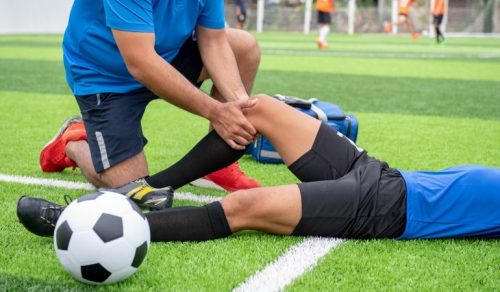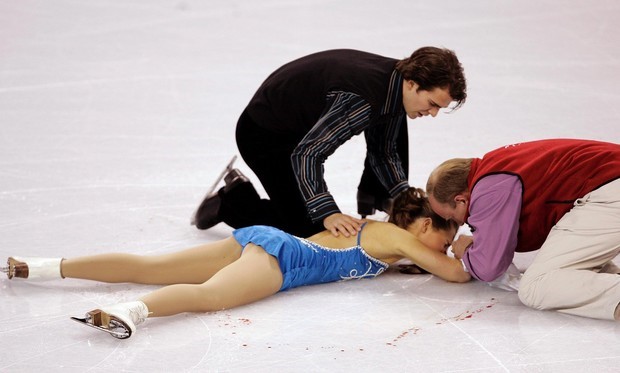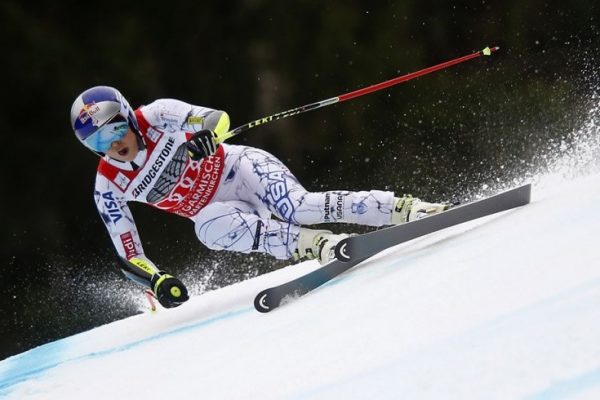Rating of the most traumatic sports
Where victories involve enormous physical exertion, meetings with a trauma doctor are inevitable. Today we will talk about the most common injuries and sports in which they occur more often.

The first place in the ranking of the most traumatic sports is occupied by football and volleyball. Both games are very dynamic, with a sharply changing pace and a heavy load. In football - on the knee and ankle joints, in volleyball - on the shoulder and interphalangeal joints of the hand, which most often suffer during training and competitions.

In second place in terms of the number of injuries – boxers. Boxing is a sport that is traditionally considered one of the most dangerous for health. After all, every knockdown or knockout received during a boxing fight is a closed craniocerebral injury. Minor hemorrhages in the brain tissue, eye injuries (up to retinal detachment) – this is just an incomplete list of health-threatening injuries that occur as a result of an injury received in the ring. Not to mention the frequent injuries of the elbow joints, hands, fractures of the metacarpal bones, from which even boxing gloves often do not save.
The third place in our current rating is rightfully occupied by gymnastics, which is rich in serious fractures, joint injuries, tendon and muscle tears. Well, first of all - injuries of the spine (due to quite serious shock, bending loads), as well as the wrist joint (with a rigid supporting, rotating load).
The fourth is shared between wrestlers and swimmers. Most of all, they suffer from the tendons of the muscles responsible for the rotation (rotation) of the shoulder. The range of injuries in these sports is quite wide: from serious dislocations of the joints to injuries to the meniscus, cruciate ligaments and ears.
In sports medicine, there is even such a concept: "wrestler's ears". Due to rough grabs and falls in representatives of this sport, they are somewhat deformed.
Winter sports are not inferior to summer sports in terms of the number of serious injuries.

Therefore, the fifth in our list will be hockey. Which is completely justified, since during the match the hockey players develop a speed of up to 40-50 km per hour. Given that the weight of the athlete (excluding heavy hockey equipment) is 70-90 kg, the impact force, which in this sport most often falls on the shoulder and knee joints, turns out to be decent. Another fate of hockey players is injuries to the face, eyes, nose with a puck flying at a speed of up to 180 km per hour. The fighters of the ice squads also suffer from diseases of the elbow and first metacarpophalangeal joints, which they receive as a result of constant trauma when grabbing a stick, hitting.

Skiers and figure skaters have similar problems. They are forced to constantly strain the joints of the first finger, manipulating ski poles at high speed. And by the number of various injuries in the knee and ankle joints on the representatives of this dynamic type of winter sports, you can study all sports traumatology.

Cycling completes the ranking. Unexpected? In fact, this sport is recognized as almost more dangerous than football. Injuries to cyclists range from minor (abrasions after a fall) to very serious (severe traumatic brain injuries, fractures). Regardless of the category, amateur and professional athletes alike suffer from chronic injuries: tendinitis, muscle and joint pain, problems with the lumbar spine, neck pain. This is evidenced by very sad statistics: in the United States alone, about $8 billion was spent on the treatment of injuries sustained as a result of cycling accidents.
Most of the problems and injuries future and current champions get just not in competitions, but in training.
Fortunately, today athletes have at their disposal the latest achievements of medical technology, which allows them to perform the most complex operations without frequent surgical intervention and return a person to the sport. For example, thanks to such an operation as arthroscopy, a person can step on the operated leg already on the same day. And after 3-4 weeks, return to professional training and the usual loads.
Sources:
https://blog.decathlon.ru/interesnye-fakty/top-5-samyh-travmoopasnyh-vidov-sporta.html
https://xn--b1ahgrjafjgng.xn--p1ai/article/samye-rasprostranyonnye-travmy-zimnix-vidov-sporta-
https://www.stada.ru/health/stadapedia/sportivnye-travmy.html


